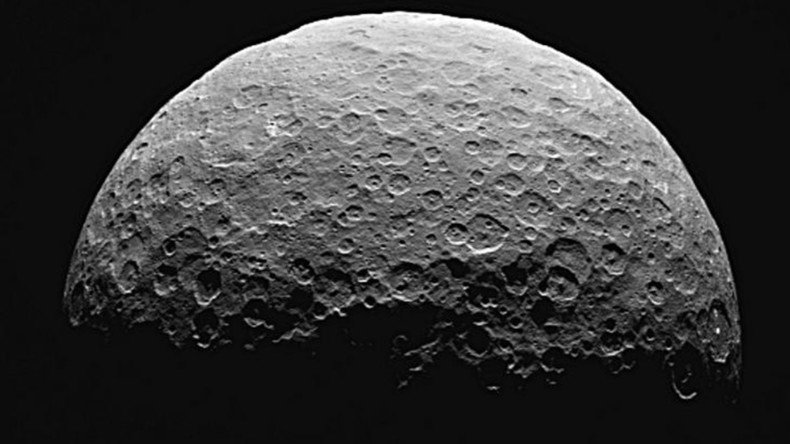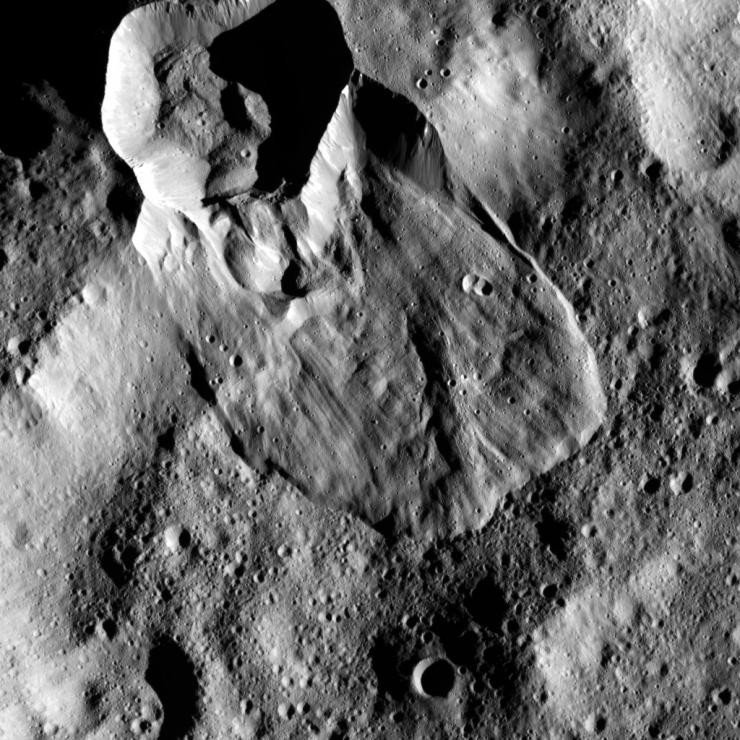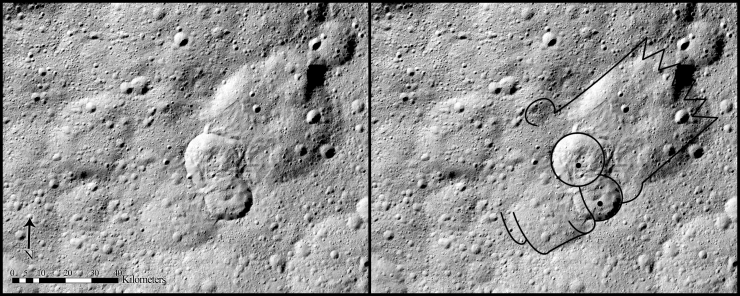Icy heart: Dramatic landslides on Ceres shed new light on dwarf planet (PHOTOS)

Massive landslides spotted on the surface of Ceres provide further evidence that the dwarf planet retains a significant amount of ground ice, according to a new study.
Ceres, once thought to be an asteroid, is the largest object in the asteroid belt running between Mars and Jupiter and is the only dwarf planet in the inner solar system.
NASA's Dawn space probe has been in orbit around Ceres since March 2015.

READ MORE: Inside Ceres: Gravity study sheds new light on dwarf planet’s peculiar core
"Images from Dawn show that landslides, many of which are similar to those seen on Earth, are very common on Ceres, and further the case that Ceres has a lot of water ice involved in its structure," said Britney Schmidt, an associate of the Dawn science team and assistant professor at Georgia Tech, who led the study.
The finding backs up five decades of Ceres observations that suggest the Texas-sized planet has an ice-rich outer shell protected by a silicate layer, a silicon compound. Published in the journal Nature Geoscience, the new study used images from Dawn’s onboard ‘Framing Camera’ which surveys topography.

READ MORE: Dwarf planet Ceres could harbor life, NASA mission finds
Scientists learned Ceres had many more landslides than previously thought, with about 20 to 30 percent of craters greater than 6 miles (10km) wide featuring some sort of ground ice feature. In fact, the only known planets with such widespread ice are Earth and Mars.
Through their research, Schmidt and her team identified three types of landslides on Ceres, the first of which is a “thick tongue-shaped” flow, mostly found on steep slopes near the poles where ice is most prevalent and which looks like rock glaciers and icy landslides in Earth’s Arctic region.

READ MORE: NASA unveils stunning images of bright craters on dwarf planet Ceres (PHOTOS)
The second – and most common – type is a thin flow with a broad base on shallow slopes, which leaves behind deposits similar to that of avalanches on Earth. The authors call one such landslide the ‘Bart’ for its striking resemblance to ‘The Simpsons’ character.
Type three is a ‘cuspate landslide,’ which is mostly associated with craters as its mud-like flow suggests it may have formed following an impact that penetrated the subsurface ice, before eventually refreezing.
Overall, the study’s authors believe this proves the planet’s subsurface is a mixture of rock and ice, estimating that the ice lies tens of meters deep and ranges from 10 to 50 percent of its volume.
The Dawn spacecraft is preparing to enter the next phase of its Ceres monitoring mission. It will enter a new orbit position around the dwarf planet to come directly between the sun and Ceres’ “most famous bright spot, the mysterious Occator Crater,” according to NASA.












